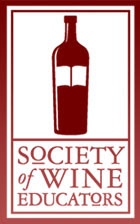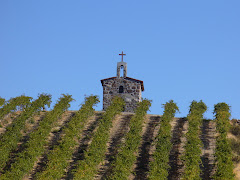
Paarl is one of the largest wine producing areas in South Africa, boasting the second-largest town in the Cape region, also called Paarl. Typically, the low-lying vineyards in Paarl have been used almost exclusively for Chenin Blanc, Colombard and Palomino (the primary grape used in Sherry). South African fortified wines come almost exclusively from the Paarl, due to the almost-exact latitude in the Southern Hemisphere as the Jerez in Spain, which means idyllic conditions for fortified wine production.
Paarl’s microclimate is Mediterranean in nature – hot and dry summers and usually damp winters. It is a warmer climate than Stellenbosch, with no real Maritime influences. The wines produced here typically are riper and richer than their counterparts in other parts of the Cape, with some producers opting for the legally allowed process of acidulation to balance out the sometimes-overpowering fruit.
There are a wide range of grape varietals grown in the Paarl. White varieties include: White Riesling, Cape Riesling, Gewurtztraminer, Bouquet (a hybrid) Hanepoot, Muscat de Frontignan, Semillon and Pinot Gris. Reds include: Cabernet Sauvignon, Merlot, Robust (a hybrid), Cabernet Franc, Shiraz, Mourvedre, and Pinotage.
The town of Paarl is the headquarters of the KWV, which is the governing body that oversees wine viticulture and production in South Africa. The KWV was set up in 1918 to help reorganize the wine industry after a massive collapse caused by overproduction near the end of the 19th Century and the outbreak of phylloxera soon after the turn of the century. The umbrella corporation of numerous wine cooperatives, this legislative body implemented regulations to control the amount of grape vines per vineyard, the amount of tonnage cultivated per hectare, the amount of wine produced, and so on. Not until 1995, when restructuring occurred, did a number of estate producers begin producing better quality wines.
Paarl’s microclimate is Mediterranean in nature – hot and dry summers and usually damp winters. It is a warmer climate than Stellenbosch, with no real Maritime influences. The wines produced here typically are riper and richer than their counterparts in other parts of the Cape, with some producers opting for the legally allowed process of acidulation to balance out the sometimes-overpowering fruit.
There are a wide range of grape varietals grown in the Paarl. White varieties include: White Riesling, Cape Riesling, Gewurtztraminer, Bouquet (a hybrid) Hanepoot, Muscat de Frontignan, Semillon and Pinot Gris. Reds include: Cabernet Sauvignon, Merlot, Robust (a hybrid), Cabernet Franc, Shiraz, Mourvedre, and Pinotage.
The town of Paarl is the headquarters of the KWV, which is the governing body that oversees wine viticulture and production in South Africa. The KWV was set up in 1918 to help reorganize the wine industry after a massive collapse caused by overproduction near the end of the 19th Century and the outbreak of phylloxera soon after the turn of the century. The umbrella corporation of numerous wine cooperatives, this legislative body implemented regulations to control the amount of grape vines per vineyard, the amount of tonnage cultivated per hectare, the amount of wine produced, and so on. Not until 1995, when restructuring occurred, did a number of estate producers begin producing better quality wines.
Look for some Paarl wines this week, as well as a look at some of the other regions of South Africa.











No comments:
Post a Comment